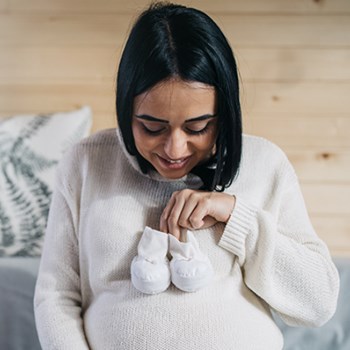Doc Talk: Get The Facts on Chronic Pelvic Pain
We sat down with Dr. Amanda Rostkowski of Fine and Gillette, a Women's Health Connecticut practice, to talk about chronic pelvic pain, its causes, and what can be done about it.
What is chronic pelvic pain?
Chronic pelvic pain is any pain that a women experiences in her pelvis that lasts more than three to six months. Very commonly, women will have cyclic pain, meaning they’ll have pain every month when they have their period. This is also considered chronic pelvic pain and symptoms can go on for years. A patient might see multiple physicians before receiving an accurate diagnosis.
What is the main cause of chronic pelvic pain?
In my practice I’ve found it to be the case that most cases of chronic pelvic pain are caused by endometriosis, though there are also several gynecologic causes; including adenomyosis which is where the lining of the uterus grows into the muscle, and fibroids, which are benign tumors of the uterine muscle. Instead of growing in a uterine shape, fibroids grow into the shape of a ball, and these can get very large. A woman can actually develop a fibrod-uterus the size of a full term pregnant belly.
What is endometriosis and why does it lead to chronic pelvic pain?
Endometriosis is a condition where the lining of the uterus, or the endometrium, which is supposed to stay inside the uterus, actually ends up outside the uterus. It can be on the ovaries, fallopian tubes, bladder, and intestines, and it can even go all the way to the top of the abdomen and land on the diaphragm, which is the muscle underneath the lungs.
This tissue doesn’t know that it’s not in the uterus so every month when a woman bleeds, that tissue bleeds too. That’s what causes so much pain. If a physician doesn’t consider endometriosis as a diagnosis, the patient may never receive proper treatment.
What treatments are available to a woman who is experiencing severe chronic pelvic pain?
Minimally invasive surgery, or laparoscopy, can be used to diagnose and treat endometriosis. Laparoscopy is a surgical technique where a small camera is inserted into the abdomen which allows visualization of the entire abdomen and pelvis without a large incision (laparotomy).
Instead of a large incision across the abdomen, the patient will receive three very small incisions, one of which is in the belly button and is almost never seen. With laparoscopy, a doctor is able to perform complex surgeries without leaving much evidence of what was done on the outside of the patient’s belly.
What are some advantages of minimally invasive surgery?
The real bonus of laparoscopy is with visualization. The camera allows for magnification of abnormal areas that might not be seen with the naked eye. Additionally, the surgeon can maneuver the camera all the way around the abdomen, underneath the diaphragm, behind the uterus, as well as underneath the ovaries. The human eye is only so good, but with laparoscopy we can see anatomy every clearly and observe small areas of endometriosis that might be overlooked if we were to do a conventional surgery through a large incision. Using the laparoscopy, we are able to perform very delicate procedures to excise the abnormal endometriosis tissues.
Additionally, patients can go home the same day from the hospital. Back in the day, a patient would come in the day before surgery and then stay five to seven days after. It is a major surgery, but since we’re now able to do it through small incisions, recovery is a lot faster, and women are able to return to work more quickly; they’re not out of work for six to eight weeks like they used to be with the big open surgeries.
What advice would you offer to a patient who thinks she might have endometriosis?
Don’t stop until you find a doctor that listens to you. If you feel like your provider is not listening or taking you seriously, go somewhere else. If you don’t have a good relationship with your doctor, then you are less likely to get the preventative care that you need. Your doctor’s feelings will not be hurt if you say that you would feel more comfortable somewhere else. Patients just need to advocate for themselves.
Help is Available
If you are experiencing symptoms commonly associated with endometriosis including excessive menstrual cramping, long-term lower back and pelvic pain, pain during or after sex, intestinal pain, and painful bowel movements or urination during menstruation, don’t hesitate to call your Women’s Health Connecticut provider. All of our practices specialize in the diagnosis and treatment of endometriosis and chronic pelvic pain.
To learn more about endometriosis, click here.



